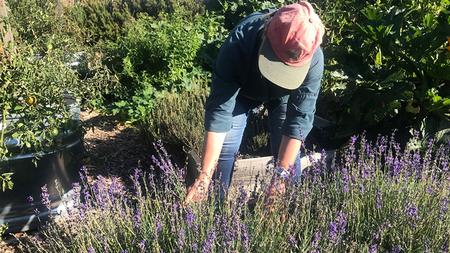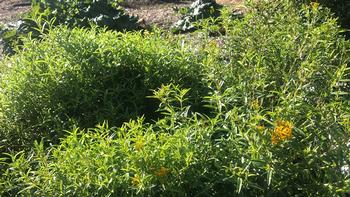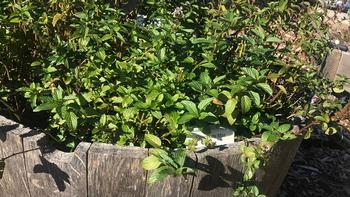News from the Edible Demo Garden
October 2022: The Many Benefits of Growing Herbs

- Most are not fussy. They can tolerate less than ideal garden environments and even survive some extreme weather conditions.
- Herbs can be easily integrated into a vegetable garden and make good neighbors for other crops.
- They are cost effective. Herbs are inexpensive to grow, and the small amounts needed for many recipes can be easily harvested as needed.
- Herbs can do double duty as ornamentals. Many perennial herbs stay green or gray green all year and make attractive landscape plants.
- The blossoms on herbs attract pollinators and other beneficial insects.
- Herbs are not usually bothered by pests and diseases.
- Deer usually leave herbs alone, especially those with strong tastes and scents.
- Herbs grow well in containers and are a good choice when garden space is limited.
What is an herb?

Herbs are considered different from spices based on the part of the plant that is used. Spices are derived from the roots, bark, fruit, berries, and seeds of plants. A plant such as Coriandrum sativum, also known as Chinese parsley, can be both an herb and a spice. It is the herb called cilantro when its green leaves are used, and the spice called coriander when its seeds are used. Because spices are more commonly grown in tropical climates, herbs are generally better suited to Bay Area gardening.
Annual versus perennial herbs

Perennial herbs die to the ground at the end of each growing season and return the next year from the roots. Perennial herbs in the Edible Demo Garden include oregano, thyme, lemon verbena, lavender, chocolate mint, chives, Mexican tarragon, anise hyssop, and pineapple sage. These plants too are summer producers and once the leaves or flowers begin to fade in the fall, they are cut back to prepare for growth the next year. The leaves of perennial herbs can be used fresh in cooking or making teas or dried for later use.
How to grow herbs
Because many common herbs originate from the Mediterranean region, they grow well in the Bay Area climate. They thrive in full sun, well-drained soil, and dry summers. While most require some regular watering, some, such as thyme, oregano, and sage, are drought tolerant. Herbs do not demand much additional fertilization but benefit from annual applications of compost to improve soil structure.
Detailed information on growing herbs can be found on this website at: https://marinmg.ucanr.edu/EDIBLES/EDIBLES_GROW_SHEETS
Join Marin Master Gardeners on October 8th for a public presentation: Herbs for All Seasons: Beyond Parsley-Sage-Rosemary and Thyme.
